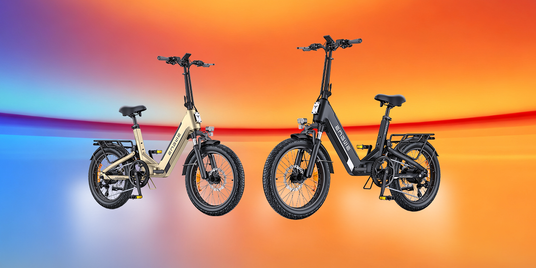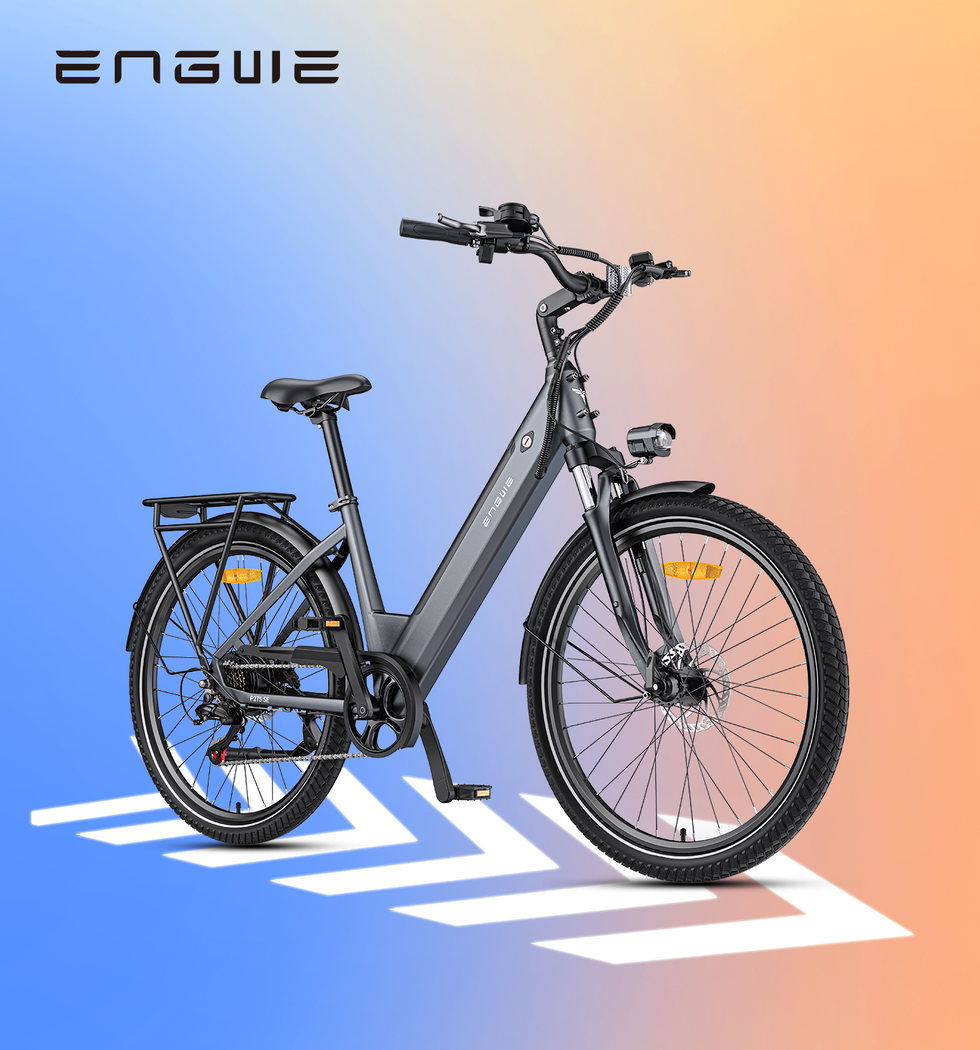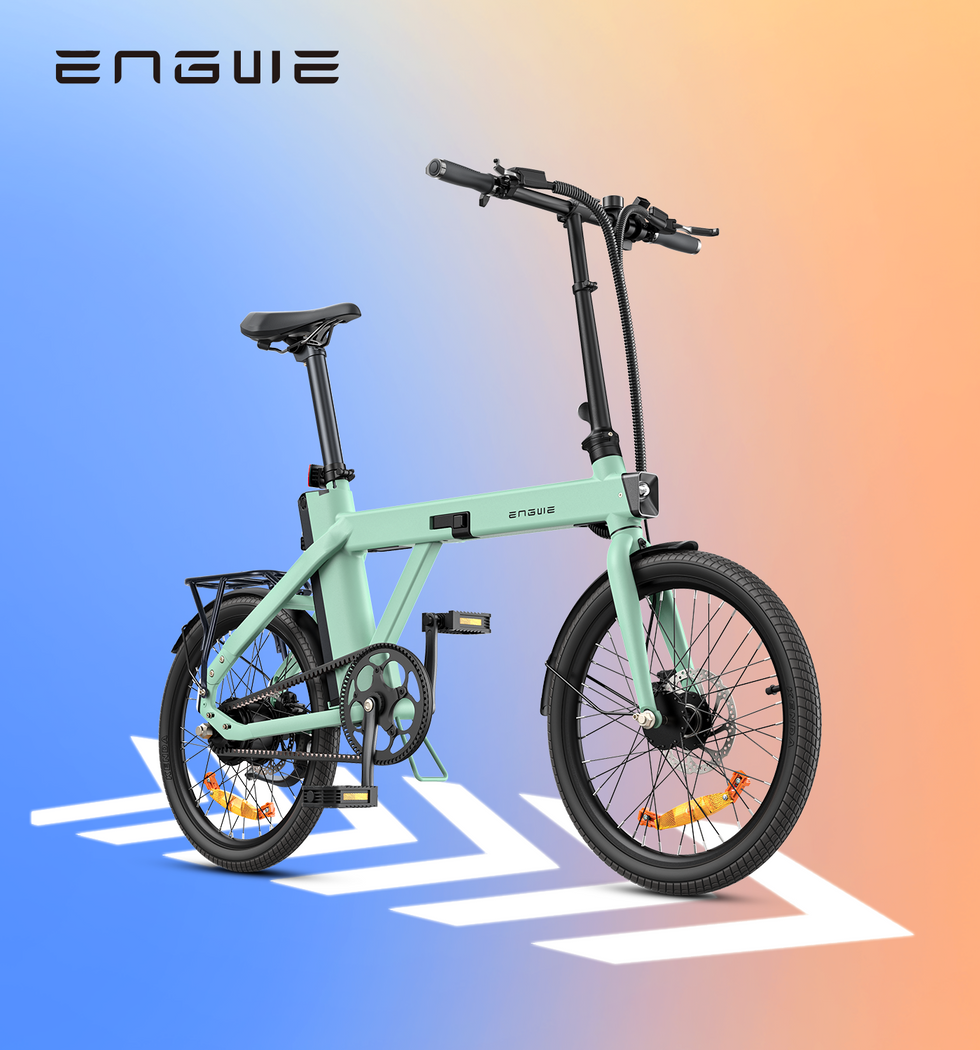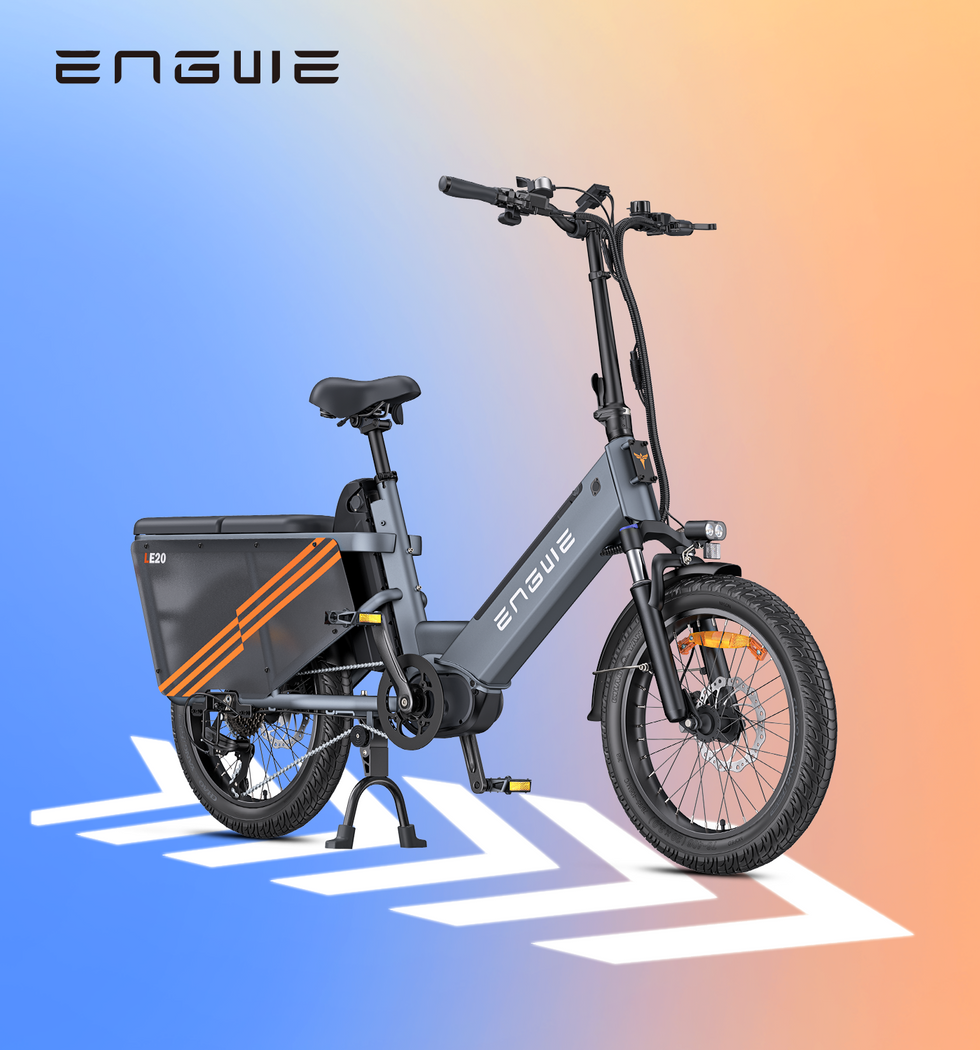For years, I believed cycling just wasn't for me. As a bigger chap, the thought of squeezing onto a flimsy-looking frame, feeling every single bump in the road, and labouring up the slightest incline was more of a nightmare than a pleasant pastime. Standard bikes felt like they were designed for a different species. They groaned under my weight, the saddles were instruments of torture, and the performance was, to put it mildly, disheartening. This common experience leaves many larger riders feeling excluded from the joy and freedom of cycling. But the electric bike revolution has changed everything, opening up roads and trails to people of all sizes, provided you know exactly what to look for. This isn't about just finding a bike; it's about finding the right machine that gives you the confidence to ride anywhere.
Before we dive into the specifics, let's structure our approach around the real-world questions that every big rider has. These are the concerns that keep you from clicking 'buy' and the key factors that separate a fantastic investment from a garage-bound disappointment.
| Your Core Question | Key Factor to Investigate | Why It Matters for a Big Guy |
|---|---|---|
| "Will this bike actually hold my weight without breaking?" | Maximum Load Capacity & Frame Durability | This is the absolute priority. Exceeding the weight limit is unsafe, voids the warranty, and puts immense stress on the frame, wheels, and components. |
| "Will I be able to get up hills or will the motor struggle?" | Motor Torque (N.m) and Power (W) | A heavier rider requires more grunt, or 'torque', to get moving and to conquer inclines. A high-torque motor makes hills feel flat and acceleration effortless. |
| "Am I going to be uncomfortable and cramped on this thing?" | Frame Geometry & Adjustability | A poorly fitting bike leads to back, neck, and knee pain. You need a bike with an appropriate size, and highly adjustable handlebars and saddle to achieve a comfortable, powerful riding position. |
| "How can I be sure I can stop safely, especially downhill?" | Braking System & Tyre Quality | More mass means more momentum. Powerful and reliable brakes, ideally large disc brakes, are non-negotiable for safe and controlled stopping in all conditions. Fat tyres add stability and grip. |
| "Will the battery die on me halfway through a ride?" | Battery Capacity (Ah/Wh) & Real-World Range | Your weight puts a higher demand on the battery. A larger capacity is essential to ensure you have enough juice for your planned rides without constant 'range anxiety'. |
The Non-Negotiable: Weight Capacity and Frame Strength
Let's start with the most critical number on any spec sheet: the maximum load capacity. For a rider over 100kg (around 220 lbs), you should be looking for bikes rated to at least 125kg (275 lbs), with 150kg (330 lbs) being an ideal target. This figure isn't just about the rider; it includes any cargo you might carry, like a rucksack or shopping. Don't be tempted to "chance it" on a bike with a lower limit. Manufacturers set these limits for a reason, based on stress testing the frame, welds, wheels, and suspension. A robust frame is often made from high-grade aluminium or steel, with reinforced gussets at key stress points like the head tube and bottom bracket. Pay close attention to the wheels, too. Spoked wheels need to be strong, with a high spoke count (32 or 36 spokes) and strong rims. An even better, more modern solution is one-piece cast wheels, which eliminate the risk of broken spokes entirely and offer superior strength and durability under heavy loads.
Power That Delivers: Why Motor Torque Matters More Than Watts
In the UK and EU, road-legal electric bikes are limited to a 250W continuously rated motor. It's easy to see this number and think it's not enough for a heavier rider. However, the secret lies not in the watts, but in the torque, measured in Newton-metres (N.m). Torque is the rotational force of the motor, the raw power that gets you moving from a standstill and pushes you up a steep hill. For a big guy, a motor with 50 N.m of torque or more is going to provide a noticeably better experience than one with 30 or 40 N.m. It's the difference between the bike feeling like it's helping you and feeling like it's effortlessly carrying you. Another feature to look for is a torque sensor. Cheaper bikes use a cadence sensor, which just turns the motor on when you pedal. A torque sensor is far more sophisticated; it measures how hard you are pressing on the pedals and delivers a proportional amount of power. This results in a ride that feels incredibly smooth, intuitive, and natural, almost like you've suddenly developed superhuman legs.

Finding the Perfect Fit: Geometry, Adjustability, and Comfort
You can have the strongest, most powerful electric bike in the world, but if it doesn't fit you, you won't want to ride it. Comfort is king. Look for bikes with a generous 'rider height' range that comfortably includes your own height. Key measurements to consider are the 'standover height' (you should be able to stand over the top tube with your feet flat on the floor) and the saddle height range. A bike that allows for significant vertical and horizontal adjustment of the saddle, as well as height adjustment for the handlebars, will let you dial in the perfect riding posture. An upright riding position generally puts less strain on the back and wrists, which is often preferable for larger riders on long journeys. The saddle itself is a critical contact point. Whilst saddles are a very personal choice, a wider, well-padded saddle is often a good starting point for heavier riders.
Stopping Power: The Critical Role of Brakes and Tyres
What goes up must come down, and when you're coming down a hill, you need absolute confidence in your brakes. For a big rider, rim brakes are simply not adequate. You must insist on disc brakes. Mechanical disc brakes are a good baseline, but hydraulic disc brakes offer superior stopping power and better modulation (fine control) with less hand effort. Look for large rotors, typically 180mm, as these dissipate heat more effectively and provide more braking force. Alongside brakes, your tyres are your connection to the road. Fat tyres, typically 4 inches wide, are a fantastic choice for big guys. They can be run at lower pressures, which acts as a form of suspension, smoothing out bumps in the road. Their larger contact patch provides incredible stability and grip on a variety of surfaces, from city tarmac to gravel paths, giving you a much more secure and planted feel as you ride.

My Top Recommendation: The ENGWE EP-2 Boost Experience
After researching and experiencing what the market has to offer, one electric bike consistently stood out as a purpose-built solution for bigger riders: the ENGWE EP-2 Boost. It feels less like a standard bike that's been reinforced and more like a machine engineered from the ground up with strength and power in mind. Its impressive 150kg (330 lbs) maximum load capacity immediately instils confidence, supported by a rock-solid foldable frame and innovative one-piece wheels that eliminate any worries about broken spokes. The performance is where it truly shines. The legally compliant 250W motor delivers an exceptional 55 N.m of torque, and the inclusion of a smart torque sensor makes the power delivery incredibly smooth and intuitive. On hills, a simple press of the unique Boost button gives you an instant surge of power, making steep inclines feel trivial. Safety and comfort are clearly priorities, with powerful 180mm front and rear disc brakes providing authoritative stopping power, and the huge 20 x 4.0 inch fat tyres soaking up imperfections in the road while providing fortress-like stability. With a massive 120km maximum range from its removable 48V13Ah battery, range anxiety becomes a thing of the past. The ENGWE EP-2 Boost is a complete, confidence-inspiring package that directly addresses and solves every key concern a big guy has when choosing an electric bike.

Essential Extras: Battery Life, Suspension, and Maintenance
As a heavier rider, you will inevitably use more battery power than a lighter one. It's simple physics. Therefore, when you see a manufacturer's claimed range, it's wise to consider that the 'best-case scenario'. To ensure you have plenty of range for your needs, look for bikes with high-capacity batteries, often expressed in Amp-hours (Ah) or Watt-hours (Wh). A 48V 13Ah battery, for example, is a very healthy size that will provide ample real-world range. Furthermore, a good front suspension fork is highly recommended. It will absorb shocks from potholes and uneven surfaces, saving your wrists, arms, and back from jarring impacts and leading to a much more comfortable and controlled ride. Finally, consider bikes built with low-maintenance, durable components like the aforementioned one-piece wheels and a reliable gear system from a reputable brand like Shimano. This ensures your bike spends more time on the road and less time in the workshop.
Finding the right electric bike is about matching robust engineering with your needs, unlocking a new world of cycling freedom.
Frequently Asked Questions for Big Riders
1. Is the manufacturer's maximum weight limit a strict rule?
Yes, absolutely. The stated maximum load capacity is a critical safety and structural limit determined through rigorous testing. Exceeding it not only puts you at risk of catastrophic component failure (such as the frame cracking or wheels buckling) but will also void your warranty. Always choose a bike with a weight limit that comfortably exceeds your own weight plus any cargo you plan to carry.
2. Are fat tyres always the best choice for a heavier rider?
For the vast majority of big riders, yes. The benefits are significant: the wider surface area provides superior stability and grip, which inspires confidence. The large air volume allows you to run lower tyre pressures, which acts as natural suspension, dramatically increasing comfort over rough surfaces. The only real downside is that they can have slightly more rolling resistance on smooth tarmac compared to skinny road tyres, meaning they might feel a little slower. However, for a powerful electric bike, this difference is negligible and is far outweighed by the gains in comfort and safety.
3. I see bikes advertised with 500W or 750W motors. Should I get one of those instead of a 250W one?
In the UK and EU, the law states that an electric bike's motor cannot have a continuous power output of more than 250W to be road-legal without needing to be registered, taxed, and insured as a moped. Bikes with more powerful motors are considered 'off-road only'. Crucially, as we've discussed, torque is a more important figure for a big rider than watts. A high-torque 250W motor, like one with 55 N.m, will provide excellent hill-climbing ability and acceleration, performing far better than a low-torque 250W motor and feeling more than powerful enough for any situation you'll encounter on UK roads.
4. How much will my weight realistically affect the electric bike's battery range?
Your weight is one of the single biggest factors affecting range. A heavier rider requires the motor to work harder to maintain speed and climb hills, drawing more power from the battery. While it's hard to give an exact figure, you should realistically expect your range to be around 20-30% less than the maximum advertised range, which is usually calculated with a light rider on flat terrain in the lowest assistance mode. To maximise your range, use lower levels of pedal assist on flat ground, ensure your tyres are properly inflated, and try to pedal smoothly.
5. Can a foldable electric bike really be strong enough for a big guy?
It absolutely can be, provided it is well-engineered. A common misconception is that the folding mechanism creates a weak point. On a high-quality bike like the ENGWE EP-2 Boost, the folding mechanism is incredibly robust and designed with multiple locking points to ensure it is just as strong and rigid as a non-folding frame. The advantage for any rider, including big guys, is the immense practicality of being able to store the bike in a car boot, on a train, or in a flat, making it a versatile and strong choice.



